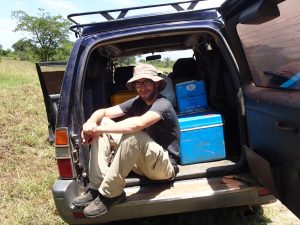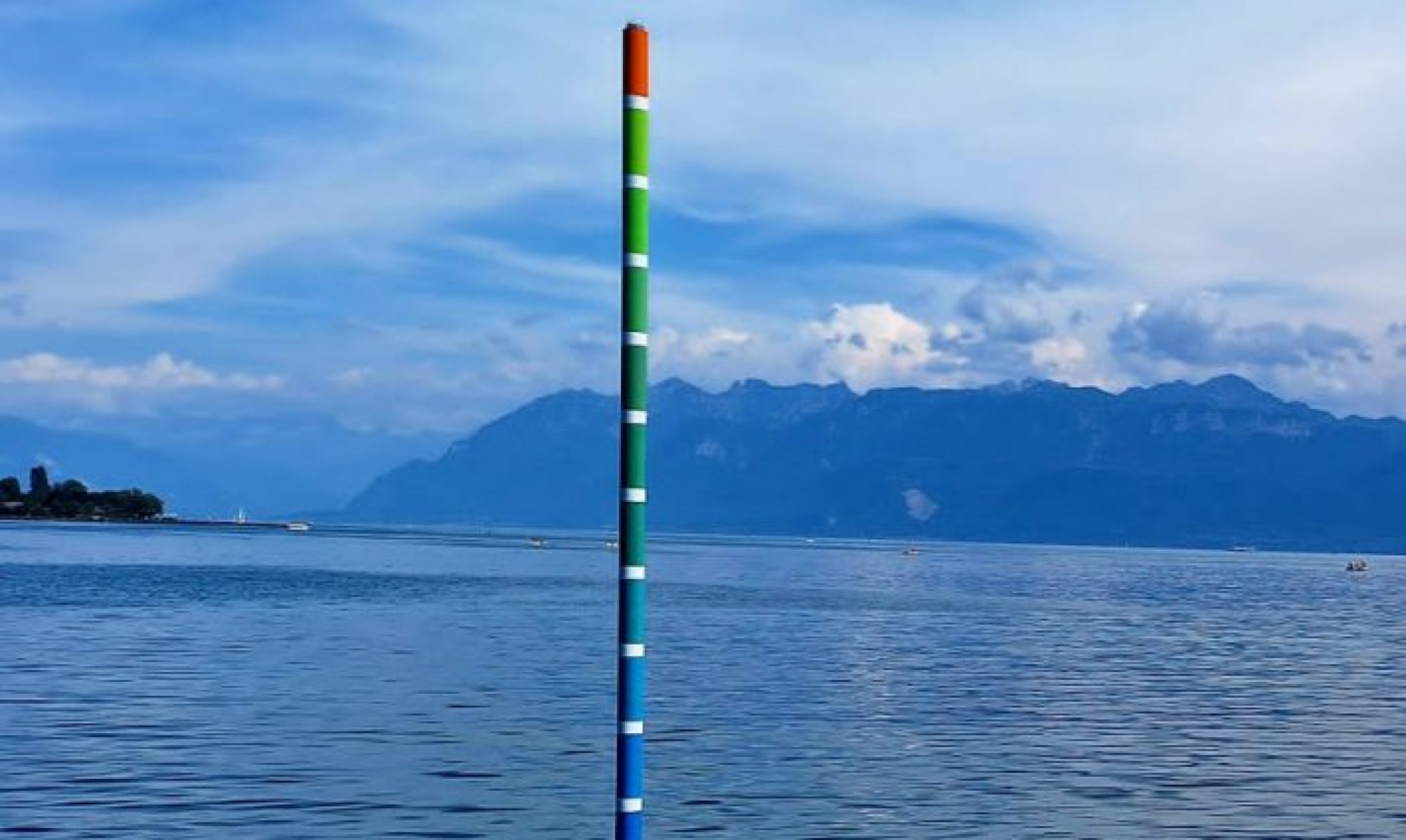Contact: thibault.lambert<at>unil.ch
Research interests
 My research activities revolve around the carbon cycle in aquatic ecosystems with a particular interest in the biogeochemistry of dissolved organic matter (DOM). My research questions pertain to the identification of its sources, its reactivity and metabolic fate during its transport along fluvial networks. Core of my research if to understand the relative importance of the external (nutrients, light exposure, consortium of bacterial communities…) or internal (i.e. DOM chemical composition) factors that control DOM reactivity and fate in aquatic ecosystems and to assess the linear or non-linear behaviour of DOM transformation in the aquatic landscape. For this purpose, I use a suite of optical and molecular tools such as UV-vis and fluorescence spectroscopy, molecular biomarkers, high-resolution mass spectrometry as well as stable isotopes. My study sites are mainly alpine and sub-alpine lakes (e.g. Lake Geneva, Switzerland) and African tropical inland waters (the Congo River, African Great Lakes), but also compose coastal wetlands and temperate rivers.
My research activities revolve around the carbon cycle in aquatic ecosystems with a particular interest in the biogeochemistry of dissolved organic matter (DOM). My research questions pertain to the identification of its sources, its reactivity and metabolic fate during its transport along fluvial networks. Core of my research if to understand the relative importance of the external (nutrients, light exposure, consortium of bacterial communities…) or internal (i.e. DOM chemical composition) factors that control DOM reactivity and fate in aquatic ecosystems and to assess the linear or non-linear behaviour of DOM transformation in the aquatic landscape. For this purpose, I use a suite of optical and molecular tools such as UV-vis and fluorescence spectroscopy, molecular biomarkers, high-resolution mass spectrometry as well as stable isotopes. My study sites are mainly alpine and sub-alpine lakes (e.g. Lake Geneva, Switzerland) and African tropical inland waters (the Congo River, African Great Lakes), but also compose coastal wetlands and temperate rivers.
Biography
Jan 2017 – present: First assistant in the Lake Group of the Institute of Earth Surface Dynamics, University of Lausanne, Switzerland. Main topics: Carbon cycling in alpine and peri-alpine lakes.
Oct 2013 – Dec 2016: Postdoctoral researcher at the Belgium Fund for Scientific Research (FNS-FNRS), Chemical Oceanography Unit, Belgium. Main topics: DOM cycling in tropical inland waters (Africa) and in temperate rivers under human pressure (Meuse River Basin, Belgium).
Sept 2009 – March 2013: PhD student at Geosciences Rennes, University of Rennes 1, France. Title: Sources, production mechanisms and export of dissolved organic carbon in headwater catchments: insight from the use of stable carbon isotopes.
Publications
Submitted
Bayon G., Delvigue C., Ponzevera E., Borges A. V., Darchambeau F., De Deckker P., Lambert T., Monin L., Toucanne S., and André L. The silicon isotopic composition of fine-grained river sediments and its relation to climate and lithology. Submitted to Geochimica and Cosmochimica Acta.
2019
Lambert, T. & Perga, ME.Non-conservative patterns of dissolved organic matter degradation when and where lake water mixes Aquat Sci (2019) 81: 64. https://doi.org/10.1007/s00027-019-0662-z
2018
Borges, A. V., Darchambeau F., Lambert T., Bouillon S., Morana C., Brouyère S., Hakoun V., Jurado A., Tseng H.-C., Descy J.-P., and Roland, F.A.E. Effects of agricultural land use on fluvial carbon dioxide, methane and nitrous oxide concentrations in a large European river, the Meuse (Belgium). Science of the Total Environment, 2018.
2017
Lambert T., Bouillon S., Darchambeau F., Morana C., Roland F.A.E., Descy J.-P., and Borges A. V. Effects of human land use on the terrestrial and aquatic sources of fluvial organic matter in a temperate river basin (The Meuse River, Belgium). Biogeochemistry, 2017.
2016
Descy J.P., Darchambeau F., Lambert T., Stoyneva-Gaertner M., Bouillon S., and Borges A. V. Phytoplankton dynamics in the Congo River. Freshwater Biology, 2016.
Lambert T., Teodoru C., Nyoni F., Bouillon S., Darchambeau F., Massicotte P., and Borges A. V. Along-stream transport and transformation of dissolved organic matter in a large tropical river. Biogeosciences, 2016.
Lambert T., Bouillon S., Darchambeau F., Massicotte P., and Borges A. V. Shift in the chemical composition of dissolved organic matter in the Congo River network. Biogeosciences, 2016.
2015
Borges A. V., Darchambeau F., Teodoru C., Marwick T., Tamooh F., Geeraert N., Omengo F., Guérin F., Lambert T., Morana C., Okuku E., and Bouillon S. Globally significant greenhouse-gas emissions from African inland waters. Nature Geosciences, 2015.
Borges A. V., Abril G., Darchambeau F., Teodoru C., Deborde J., Vidal L., Lambert T., and Bouillon S. Divergent biophysical controls of aquatic CO2 and CH4 in the World’s two largest rivers. Scientific Reports, 2015.
Balagazi C., Darchambeau F., Bouillon S., Yalire M., Lambert T., and Borges A. V. River geochemistry, chemical weathering, and atmospheric CO2 consumption rates in the Virunga Volcanic Province (East Africa). Geochemistry, Geophysics, Geosystems, 2015.
Lambert T., Darchambeau F., Bouillon S., Alhou B., Mbega J.-D., Teodoru C., Nyoni F., Massicotte P., and Borges A. V. Landscape control on the spatial and temporal variability of chromophoric dissolved organic matter and dissolved organic carbon in large African rivers. Ecosystems, 2015.
Jeanneau L., Denis M., Pierson-Wickmann A.-C., Gruau G., Lambert T., and Petitjean P. Sources of dissolved organic matter during storm and inter-storm conditions in a lowland headwater catchment: constraints from high-frequency molecular data. Biogeosciences, 2015.
2014
Bouillon S., Yambélé A., Gillikin D., Teodoru C., Darchambeau F., Lambert T., and Borges A. V. Contrasting biogeochemical characteristics of the Oubangui River and tributaries (Congo River basin). Scientific Reports, 2014.
Lambert T., Pierson-Wickmann A.-C., Gruau G., Jaffrezic A., Petitjean P., Thibault J.-N., and Jeanneau L. DOC sources and DOC transport pathways in a small headwater catchment as revealed by carbon isotope fluctuation during storm events. Biogeosciences, 2014.
Jeanneau L., Jaffrezic A., Pierson-Wickmann A.-C., Gruau G., Lambert T., and Petitjean P. Constraints on the sources and production mechanisms of dissolved organic matter in soils from molecular biomarkers. Vadose Zone Journal, 2014.
2013
Lambert T., Pierson-Wickmann A.-C., Gruau G., Jaffrezic A., Petitjean P., Thibault J.-N., and Jeanneau L. Hydrologically driven seasonal changes in the sources and production mechanisms of dissolved organic carbon in a small lowland catchment. Water Resources Research, 2013.
2011
Lambert T., Pierson-Wickmann A.-C., Gruau G., Thibault J.-N., and Petitjean P. Carbon isotopes as tracers of dissolved organic carbon sources and water pathways in headwater catchments. Journal of Hydrology, 2011.
Pierson-Wickmann A.-C., Gruau G., Jardé E., Gaury N., Brient L., Lengronne M., Crocq A., Helle D., and Lambert T. Development of a combined isotopic and mass-balance approach to determine dissolved organic carbon sources in eutrophic reservoirs. Chemosphere, 2011.
